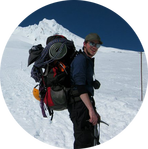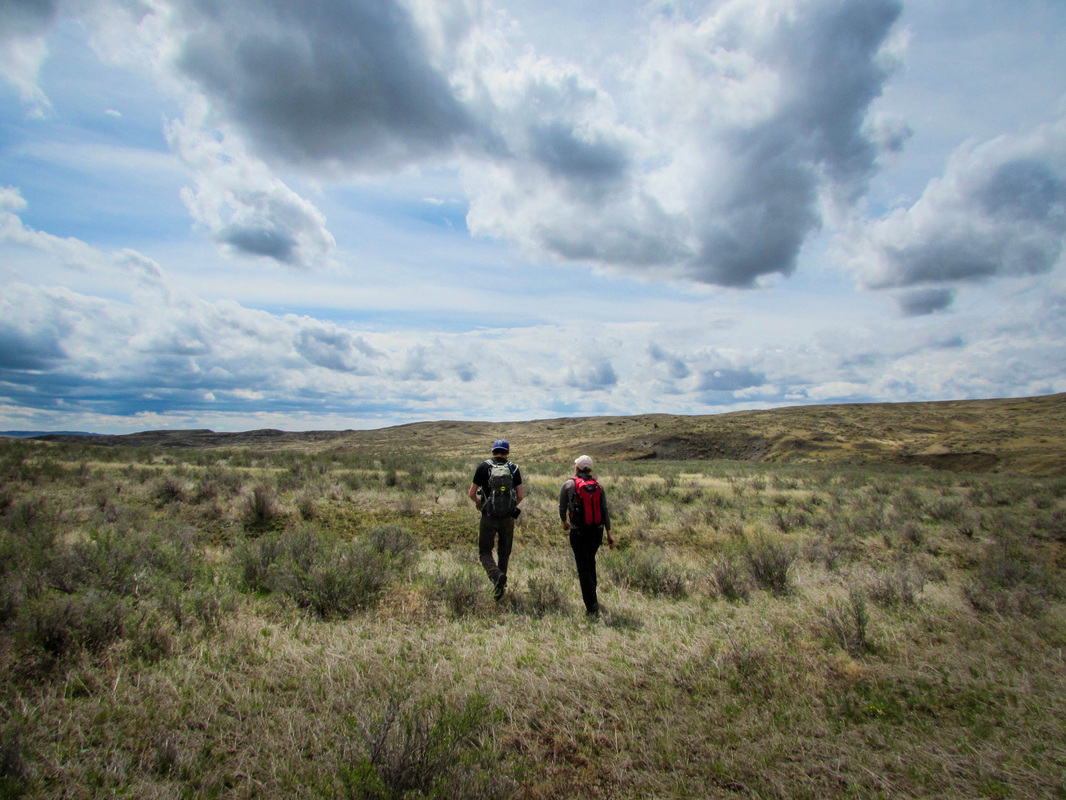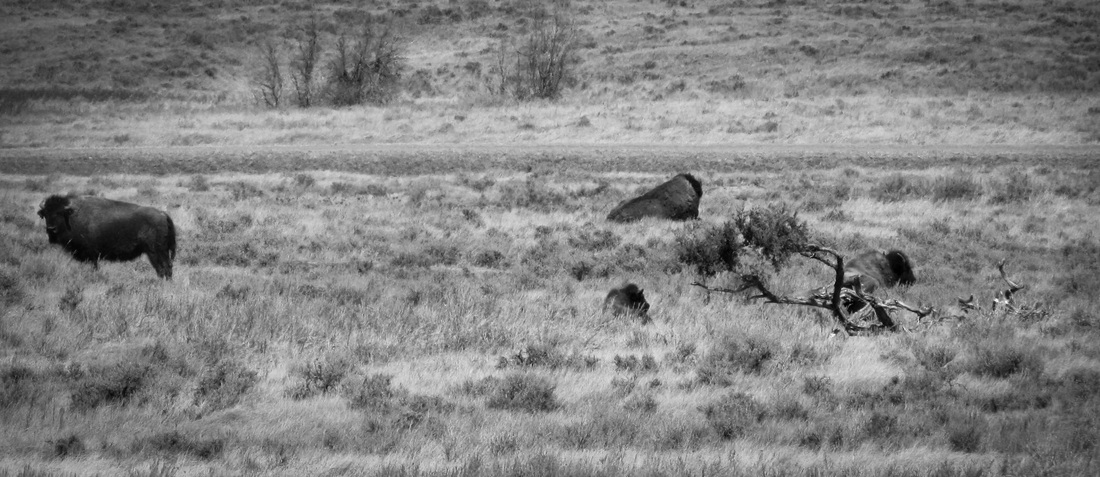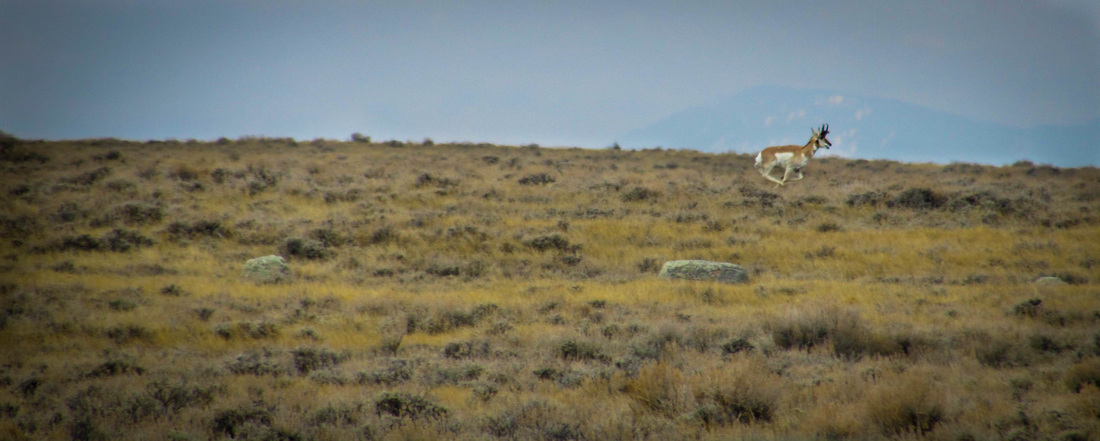Matt Howe grew up in Indiana and, before joining the Landmark crew, worked at an indoor rock climbing gym. His sense of adventure and love for the outdoors can be attributed to summers spent at Camp Palawopec where he has served as the camp’s co-director. Matt fell in love with the West during a cross-country roadtrip which instilled in him a respect for the western landscape, its resident creatures, and the sweet-spicy smell of sagebrush. Matt likes to mountain bike, cave, rock climb, read, play music, and care for his ‘99 Subaru Forester.
It’s a running joke. The bison often vanish and reappear as they see fit. You’ll often count 5-10 bison from a distance and then notice dozens more as you get close. As the first Landmark crew of the spring, one of our big focuses in the field is counting bison calves and trying our best to come up with a solid calf to adult ratio. We head out to the field in pairs twice a week for most of May and onward into the summer to perform these counts.
Earlier this week, myself and my partner, Kayli, were out on a pleasant spring morning transecting a good chunk of the Sun Prairie to find bison herds and see some newborns. Usually, the herds show up like popcorn and we’ll stop at least every mile or so to count a group. Today, though, the count was slow. We called out to the prairie, “Bison, where are you?” But they were reluctant to respond.
There was one last hill to climb before we reached a nice vantage point for counting. We came over the hill and into the valley and there, probably 15 yards away, was a beautiful pronghorn. These spectacular creatures are most often seen from a vehicle, running full tilt and hopping over large sagebrush like Olympic hurdlers. Or from far away. Very far away. So this close encounter that we stumbled upon was an unexpected treat.
The texture of the prairie is so vast and uncertain that the coulees, valleys, and creek beds around here can hide anything. Sometimes, the thing you find on the other side might not even be the thing you’re looking for, if you’re looking for anything at all (which we always are). But it can take you by surprise, take your breath away, and take you back to the stillness of the world that you lose sight of from time to time. That’s one of the things that I’ve grown to love during my time on the prairie as part of the Landmark project.
Find out more about the project and apply for a crew position on the Landmark page. Keep up with ASC by subscribing to ASC’s blog, liking us on Facebook and following us on Twitter (@AdventurScience), Instagram (@AdventureScience) and Google+.




